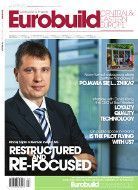Everyone is standing to attention, the streets have been cleaned, the litter bins are no longer overflowing and everything is green and beautiful. In the last 25 years Warsaw has changed beyond recognition. From the shabby, post-communist city it was then, it has metamorphosed into a thriving metropolis. I remember when the first McDonald’s opened in the city in 1992 – and it is astonishing to think that such important and famous people as Agnieszka Osiecka and Jacek Kuroń took part in the opening ceremony. Well, the introduction of the free market was a significant event. When I first entered this fast food emporium to finally find out what this miraculous western invention, the Big Mac, tasted like, the most important thing for me was the brightly coloured balloon I was given by a clown. At the time anything colourful was an object of wonder, since there was such a lack of colour on our streets and in our lives. Sometimes I think we have completely forgotten just how bad






























































